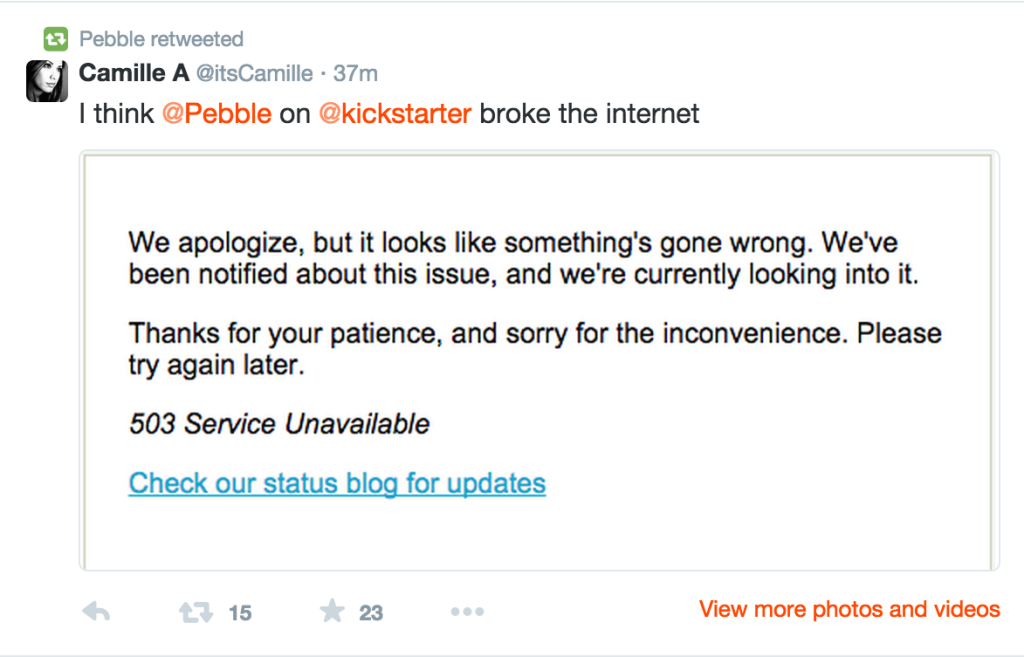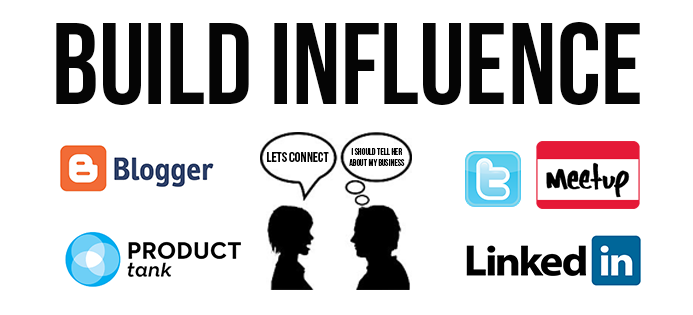Building influence in the Product Management world
Building influence is a powerful word but not a lot of people know what it means and how you actually get to achieve influence. Influence by the definition is “the capacity to have an effect on the character, development, or behaviour of someone or something, or the effect itself.”
So people can influence people’s perception of something e.g. a product. The same applies to best practices in product management and perfecting what it means to work efficiently with your team and achieve synergy.
What can you do to build your profile as a Product Manager and create influence?
1. Tweet away and join conversations
Twitter is a good way to connect to other industry professionals and share your perspective and own opinion. Join conversations and include companies, which have an impact. Link to industry articles, use hashtags and talk about topics, which make you think.

In case you decide to write about Product Management, it is crucial to build up a following on Twitter. If you have decided to start writing about Product Management on your blog it is recommended you dig for potential readers via Social Media.
Make it easy for people to discover you. It would be a shame if you run a blog that includes some really valuable information but you are not heard. Make sure to include images along with your tweets as well. They reportedly show a greater conversion and engagement with your content.
2. Join LinkedIn Groups
Joining LinkedIn groups can be beneficial to connect with other professionals and that’s what makes it valuable. You have the opportunity to exchange opinions and discuss on trends, technology and best practices. Unfortunately it has become a bit of a place for a lot of “spam”. For group admins it is extremely hard to keep up with the information flow, especially when there is a high number of participants in the group. What happens is that people post links to their blog posts or other websites but do not participate in the group in return. A community feeds off participation and exchanging each other. The essence is to discuss topics and raise your voice. I would highly encourage you to try to add something to the group. People will appreciate your input in return and will want to find out who you are and what you do. It is an easy way to get the ball rolling on building some influence.
Being active on LinkedIn has many benefits. You not only get to connect with industry experts but you get noticed by recruiters if you are actively participating. If you are on the lookout for new jobs this may come in handy for you.

Look at these stats for instance. In the month of February I was more active on LinkedIn. It resulted in more profile views and added more visibility to my profile. There was a higher engagement and more recruiters visited the profile. Do not contribute to groups etc. solely for the purpose of ranking up your views however. You want to produce quality content and share a valuable opinion to gain respect by group members. Bare that in mind.
3. Connect with people
Absolutely crucial to build up your profile and get connected. You need to constantly work on expanding and maintaining a network. This applies to every business. You need to be out there talking to people and make connections. Go to workshops, seminars and conferences.
A good way to connect with your local product management community is to join interest groups on meetup.com. Wherever you may be in the world, you can be sure you’ll find a relevant group of people interested in Product Management on the platform. Join the group and participate. Producttank, which is organised by the mindtheproduct.com guys is a great example. They organise workshops in various cities all around the world. It is a great way to meet new people and simultaneously educate yourself. You get to connect with industry leaders in the field of product management and beyond, which could potentially become a center point of your network.
4. Content Marketing – Have your own opinion and pick trending and relevant topics
Write and post articles on platforms such as LinkedIn or medium.com. Use these to reach an audience if you do not run your own blog/website.
You do not have to reinvent the wheel. You can build influence on existing topics within product management but it has to be relevant and most importantly include your own perspective.
Great speakers have a foundation of knowledge, which is not necessarily new but what they make out of it is what matters. If you want to build influence you need to add a new angle to a topic and try to extend and push the boundaries.
Furthermore picking topics, which currently are hot and talked about a lot are a good way to get some buzz going and raise your profile.

A very recent example is “the dress” and a worldwide discussion about its colors. You could write a post about it and apply the topic to your field of expertise (e.g. product management) to create a valuable content marketing piece. Attention will be drawn to you and a natural sense of curiosity will result in people wanting to find out more about you. If you deliver quality content and are relevant you will build influence. Do not just create content with the goal of achieving a high search engine ranking and don’t overdo things like keyword density. If it is not relevant to the user it will result in a high bounce rate and therefore your content will appear lower in search results.
5. Keep in touch and contribute
Keeping in touch with people is important. By any means you do not have to tweet people everyday and tell them you just caught a fish but what you should do is attempt to interact with them and try to identify touch points and topics that are relevant for you both. Example: A friend in your network posts an article about iBeacon technology. What you could do is interact with the post and add an interesting angle your connection has not mentioned in the article. You can be sure people value, if you interact with their content and try to contribute.

